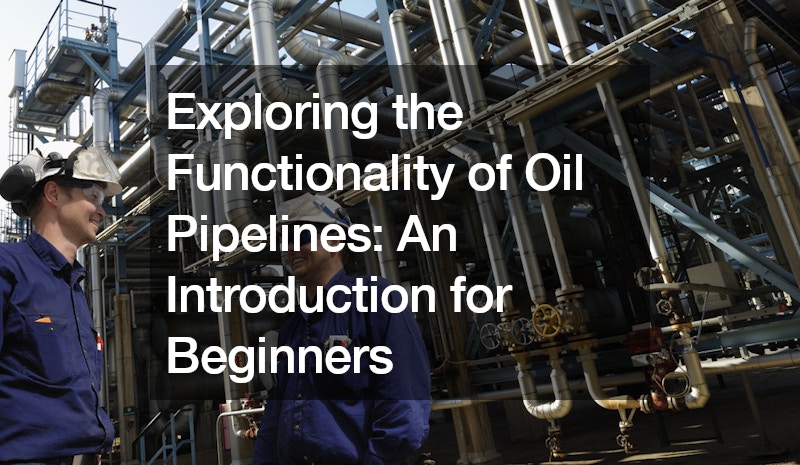

Pipelines play a vital role in our modern world, particularly in the energy sector. Among the various types of pipelines, oil pipelines stand out as crucial arteries, facilitating the transportation of millions of gallons of oil from extraction sites to refineries and eventually to end-users. This blog post will delve into the functionality of oil pipelines, exploring their structure, operation, and significance in powering our everyday lives.
The Anatomy of Oil Pipelines
At the heart of oil pipeline systems lies a network of interconnected pipes that resemble the intricate structure of a tree. Just as roots draw moisture from the ground and channel it upwards, feeder lines pull oil from extraction sites and funnel it towards larger trunk lines.
These trunk lines act as the main conduits, carrying the oil over vast distances to regional terminals and refineries. From there, distribution lines branch out, delivering the refined products to end-users such as gas stations and industrial facilities.
The Role of Pump Stations
To maintain a consistent flow of oil throughout the pipeline system, pump stations are strategically placed along the route. These stations serve a crucial function, ensuring that the oil remains at the desired pressure levels as it traverses long distances. By periodically boosting the pressure, pump stations mitigate the natural drop-off in pressure that occurs due to friction within the pipeline, thereby optimizing the efficiency of the transportation process.
Optimizing Efficiency with Digital Technology
In recent years, the efficiency and safety of oil pipelines have undergone a transformative evolution with the integration of cutting-edge digital technology. Advanced measurement systems and data analytics are at the forefront of this transformation, providing operators with real-time insights into key parameters such as flow rate, pressure, and temperature along the pipeline network. By continuously monitoring these critical metrics, operators can detect potential issues before they escalate, allowing for proactive maintenance and optimization of operations.
Moreover, the advent of sophisticated predictive analytics algorithms has further revolutionized maintenance practices in the oil pipeline industry. By analyzing vast amounts of data collected from sensors deployed throughout the pipeline infrastructure, these algorithms can anticipate potential failures or performance degradation with remarkable accuracy. This predictive maintenance approach not only minimizes downtime and costly repairs but also extends the lifespan of pipeline assets, maximizing their operational efficiency and return on investment.
In addition to predictive maintenance, process automation plays a pivotal role in optimizing workflow and minimizing human error in oil pipeline operations. Digital control systems enable operators to remotely monitor and control various aspects of the pipeline network, from valve settings to pump operations, with precision and efficiency.
Safety Measures and Environmental Considerations
Despite their efficiency, oil pipelines are not without risks. Spills and leaks pose significant environmental and safety hazards, necessitating stringent safety measures and regulatory oversight. Pipeline operators invest heavily in preventative maintenance, inspection, and leak detection technologies to minimize the likelihood of incidents. One such technology is the pipeline caliper tool, a specialized device used for the internal inspection of pipelines. This tool measures the internal diameter of the pipeline, detecting abnormalities such as corrosion, deformation, or blockages that could compromise its integrity.
Moreover, environmental considerations, such as habitat protection and carbon emissions, are increasingly factored into pipeline planning and operation, driving innovation in sustainable pipeline technologies. The integration of advanced inspection tools underscores the industry’s commitment to environmental stewardship and safety.
The Economic Impact of Oil Pipelines
Oil pipelines are not just conduits for transporting energy; they are vital arteries of economic activity, impacting various sectors and contributing significantly to global economic growth. Beyond their functional role in energy transportation, oil pipelines wield considerable economic influence. The seamless flow of oil from production fields to refineries supports a myriad of industries, from automotive manufacturing to petrochemicals. The reliability and cost-effectiveness of pipeline transportation contribute to stable energy prices and bolster economic growth by ensuring a steady supply of oil to meet both domestic and international demand.
Additionally, the construction and maintenance of oil pipelines create employment opportunities and stimulate local economies, particularly in regions with abundant oil reserves. These projects require skilled labor, materials, and services, leading to the establishment of supporting industries and infrastructure development. Additionally, the presence of pipeline infrastructure can attract further investment in related sectors such as construction, engineering, and technology, fostering economic diversification and growth.
Furthermore, oil pipelines play a crucial role in enhancing energy security and reducing dependence on less reliable or more expensive modes of transportation. By providing a cost-effective and efficient means of transporting oil over long distances, pipelines help mitigate supply chain disruptions and minimize transportation costs for both producers and consumers. This stability in energy prices encourages investment and consumption, driving economic activity across various industries and sectors.
Final Thoughts
Oil pipelines serve as the lifeline of our modern energy infrastructure, facilitating the efficient transportation of oil from extraction sites to end-users. Through a network of feeder lines, trunk lines, and distribution lines, pipelines enable the seamless flow of oil over vast distances. Pump stations play a crucial role in maintaining pressure levels and optimizing the efficiency of transportation. Furthermore, advancements in digital technology have revolutionized pipeline operations, enhancing safety, efficiency, and environmental sustainability. As we continue to rely on oil as a primary energy source, understanding the functionality of oil pipelines becomes increasingly important in ensuring the reliability and sustainability of our energy supply chain.
.








